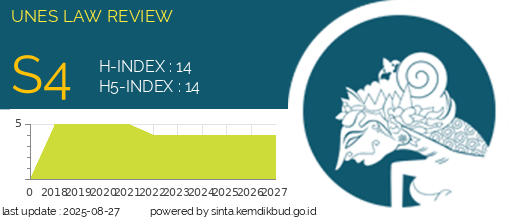Sengketa Merek Strong dan Penggunaan Kata Umum pada Merek Dagang (Studi Putusan Mahkamah Agung 332 K/ Pdt.Sus-Hki/2021)
DOI:
https://doi.org/10.31933/unesrev.v6i2.1325Keywords:
Trademark, Dispute, STRONGAbstract
Trademark becomes a valuable asset owned by a company, especially if the brand has become a well-known mark. The well-known of a trademark creates a greater opportunity for deviations in the use of the brand which will eventually lead to the trademark disputes. Trademark disputes are still common in Indonesia with various problems, especially imitation of famous trademarks. The purpose of this study was to determine the decision process of the judiciary regarding the "STRONG" trademark dispute from the first level and an appeal and to see its conformity with the applicable laws and regulations and justice for the disputing parties.The approach method used in this thesis is normative juridical, namely research that uses existing legal norms and the application of these legal norms with research specifications is descriptive-analytical. The results showed that the Supreme Court in Decision Number 332 K/Pdt.Sus-HKI/2021 which stated that the considerations at the Central Jakarta Commercial Court were wrong in applying the law, had given correct considerations and decisions in accordance with applicable laws and regulations. The Defendant/Applicant for Cassation has not violated the rights to the “STRONG” trademark belonging to the Plaintiff/Respondent of Cassation. In order to be able to use a trademark in the form of a general descriptive word, it must build a secondary meaning on the trademark so that it can become a stand-alone trademark and has a strong distinguishing power. The need for additional criteria and use of trademark in the form of descriptive general words in the laws and regulations concerning trademarks in Indonesia.
Downloads
References
Henry Soelistyo, 2017, Bad Faith Dalam Hukum Merek, Cet.II, PT Maharsa Artha Mulia, Yogyakarta, h.144.
H. OK. Sadikin, Aspek Hukum Hak Kekayaan Intelektual, (Jakarta: PT. Rajagrafindo Persada, 2015), halaman 359.
Kitab Undang-Undang Hukum Perdata (KUHPerdata)
Peraturan Menteri Hukum dan Hak Asasi Manusia Nomor 67 Tahun 2016 tentang Pendaftaran Merek
Tim Lindsey, Eddy Damian, Simon Butt dan Tomi Suryo Utomo, Hak Kekayaan Intelektual Suatu Pengantar, (Bandung: PT. Alumni, 2003), halaman 131
TRIPs (Trade Related Aspects of Intellectual Property Rights) Paris Convention
Undang-Undang Dasar Negara Republik Indonesia Tahun 1945
Undang-undang Nomor 20 Tahun 2016 tentang Merek dan Indikasi Geografis
Undang-undang Nomor 07 Tahun 1994 tentang Pengesahan Agreement Establishing The World Trade Organization
Yahya Harahap. 1996. Tinjauan Merek Secara Umum Dan Hukum Merek Di Indonesia Berdasarkan Undang-Undang No 1992. Bandung: PT. Citra Aditya Bakti.
Downloads
Published
How to Cite
Issue
Section
License
Hak cipta :
Penulis yang mempublikasikan manuskripnya di jurnal ini menyetujui ketentuan berikut:
- Hak cipta pada setiap artikel adalah milik penulis.
- Penulis mengakui bahwa UNES Law Review berhak menjadi yang pertama menerbitkan dengan lisensi Creative Commons Attribution 4.0 International (Attribution 4.0 International CC BY 4.0) .
- Penulis dapat mengirimkan artikel secara terpisah, mengatur distribusi non-eksklusif manuskrip yang telah diterbitkan dalam jurnal ini ke versi lain (misalnya, dikirim ke repositori institusi penulis, publikasi ke dalam buku, dll.), dengan mengakui bahwa manuskrip telah diterbitkan pertama kali di Jurnal UNES Law Review.



















